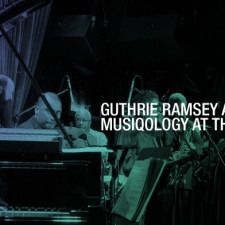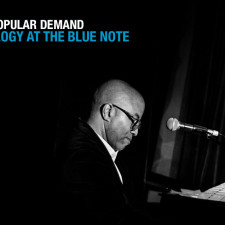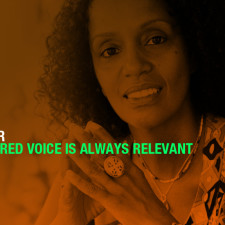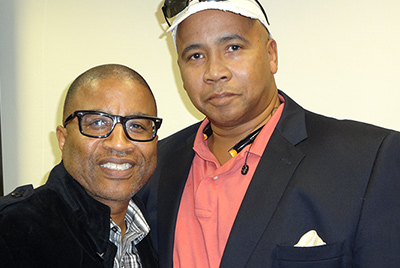When you least expect it.
I think the singer Imani Uzuri had posted something on Facebook about work songs from the African American tradition on her timeline. I must have “liked” it or wisecracked something. The next think I knew, she was calling and started singing a work song in that glorious full voice in the bottom of her range. Robust and soulful—the kind of song performance that makes something happen in the room, the something that made Civil Rights workers know that “raising a song” could electrify a church meeting with the right kind of energy. I slid to the piano, found the key and fell into her groove – which is a standard requirement of this oral tradition. Her squeal made me laugh; I guess she liked our impromptu collaboration. Imani is nothing if not a free spirit following her alluring muse. “You want to do this on my upcoming Blue Note gig?”
Although we had never worked together, I was already a big fan of Imani Uzuri, after listening to her CD The Gypsy Diaries and hearing her live a few times. Our rehearsal showed me just how deeply intuitive she is at crafting performances with a composer’s sensibility. And since a large part of my training and experience involved accompanying female singers, we pulled something together with a message, and hopefully, an emotional trajectory. We dedicated our performance to one of the “Angola Three,” Herman Wallace, a man who spent forty-one years in solitary confinement in Louisiana State Penitentiary only to die of liver cancer three days after being released on October 4, 2013. The following are some thoughts about the evening from an ear-witness, Matthew D. Morrison, Ph.D., Candidate in musicology at Columbia University.
[heading]Thoughts on the purely musical aspects?[/heading]
Thinking back to when I hastily slid into my seat, just shy of 8pm, between Dr. Guy Ramsey and his daughter, Bridget (my Spelman sister), and across from Dr. Kellie Jones (curator, scholar, and wife of Dr. Guy) & my (ethno)musicological sista’/colleague, Fredara M. Hadley, at the Blue Note Jazz Club in NYC
N.b.:
re: to be transformed by Imani Uzuri (vocalist, composer, & scholar) & an ensemble of world-class musicians, featuring Dr. Guthrie Ramsey on piano
when: Monday, October 7, 2013
what: Performance of the Gypsy Diaries w/a Hush Harbor excursion
I’m always excited to experience Imani Uzuri in performance. She and her eclectic band of musicians transform any space into a sonic ceremony—and I come ready to worship through sound. (My description might sound a bit sanctimonious, but not-so ironically, Imani, Dr. Ramsey, and I are all rooted in the church [chu’ch], so it’s real). Imani and her world-class musicians create some powerful, sophisticated, and thoughtfully crafted sounds through her compositions.
…but thinking back to that Blue Note performance…
I can’t wait to hear Dr. Ramsey and Imani go all the way to church.
The first thing that came to mind as I sat: “I can’t wait to hear Dr. Ramsey and Imani go all the way to church.” (don’t forget – we are in The Blue Note Jazz Club). So I leaned over to Doc and said, “I know you and Imani do a lot of things, but I am most excited to hear the two of you perform what I consider to be ‘y’all’s thang’—the place that all of your work is rooted in to me—the (black) spiritual.” Shortly after, Doc passed me a note (like in church) that happened to be the performance score. In the dimness, I made out lines, arrows, descriptive words (e.g., rumble), and other graphic indicators that outlined the duo’s set. I radiated with excitement.
“A dream come true”—is what Doc uttered to me as he prepared his mind and fingers to hit the stage with Imani Uzuri. But my dream came true when I was taken on a sonic journey that only a team of musicological, blackalogical, spiritualogical, compositionalogical, spontaneiological artists can pilot. Hush harbor (spiritual). Railroad (work song). Plantation (field songs). Church (gospel). Loft (bebop)—just a few of the places that my spirit visited through the soundscapes of their performance.
The set started as Doc created a comforting meditation on the piano. (I didn’t “listen” with the intent to review the show, so these are my recollected thoughts—what my spirit remembers hearing). A melodically fluid, rhythmically deceptive, and rather harmonically dense motive that seemed to never stop, yet always come to a point of rest. This fugitive-like motive—introduced with the kind of “cool” that only Dr. Guy can finesse—continued to transform itself (as blackness often does) into new times, spaces, and places. My body almost couldn’t keep up with how quickly and effortlessly I was transported from this anxiously contemplative moment to being surrounded by the clanking of sledgehammers against steel rail lines. The vigor and intensity with which Doc carefully hammered out those blocked chords on the piano, punctuated the Paul Robeson/Sweet Honey in the Rock-esque energy of Imani’s calls, groans, moans, and melodic declamations made the work song performed feel so real that I had to transport myself back to reality. By this time, I had already been taken on such a trip that my spirit was both lost and found in the (brief) sonic journey of the set.
I recall going all the way to church at one point, Doc laid into the keys in a way that reminded me of that senior-choir church pianist who would make everybody jump to their feet up when she “hit those chords.” Imani called back, as she performed her southern, gospel, church ‘gal roots, while the duo ushered us into the house of worship via the Blue Note stage. How a pianist effortlessly transitions from here to a (post) bebop style of improvised playing, I’m not sure—but it damn sure happened as Doc began to channel The Amazing Bud Powell in one of the sonic journey’s of the set. His performance was keeping in the tradition of black musicians whose skill and double-consciousness allow them to effortlessly traverse many styles. Oh, that sacred/secular divide was erased this night, and I continued to feel the energy of the ancestors invoked and honored by the duo as the set closed. The variegated sounds of blackness that I recall were all connected through the spirit from which they are derived and are composed, and then manifested through the particular skills of the “chosen” performers.
Imani Uzuri and Dr. Guy Ramsey came together to serve as co-captains on this express voyage, one full of sonic pit stops along the road of black music’s history. Only artists of high craft with this type of sensitivity to the past and those before them, the spirit, and musical styles/forms, are able to create such a virtuosic performance that shows the power and diversity of blackness (in its Americanness) through unified sound.
Tags: Black Music, Blue Note, Dr. Guthrie Ramsey, imani nzuri, new york city

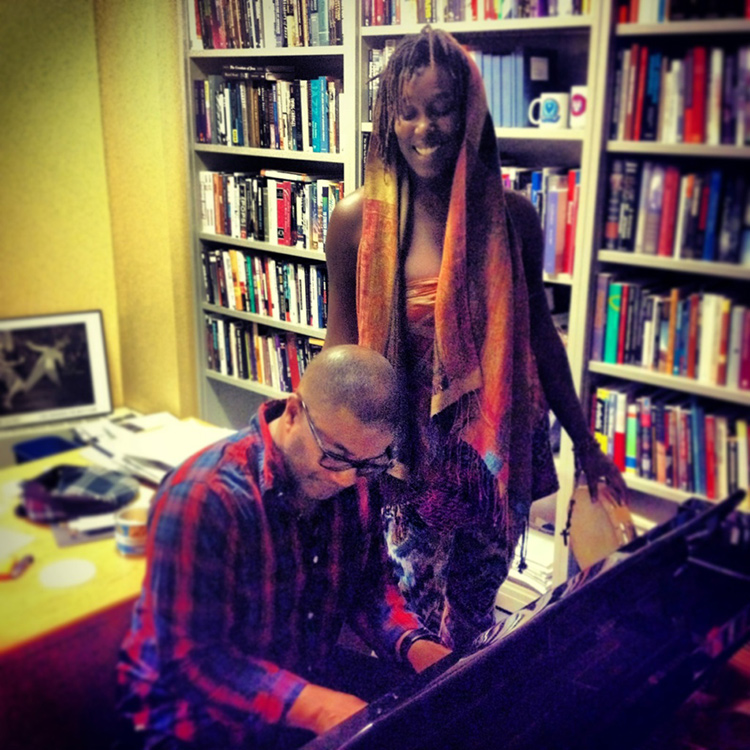
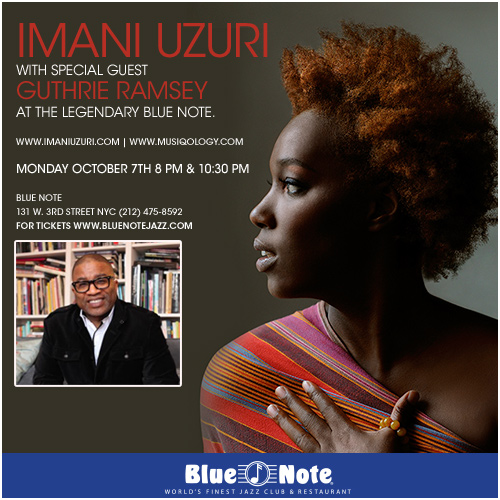
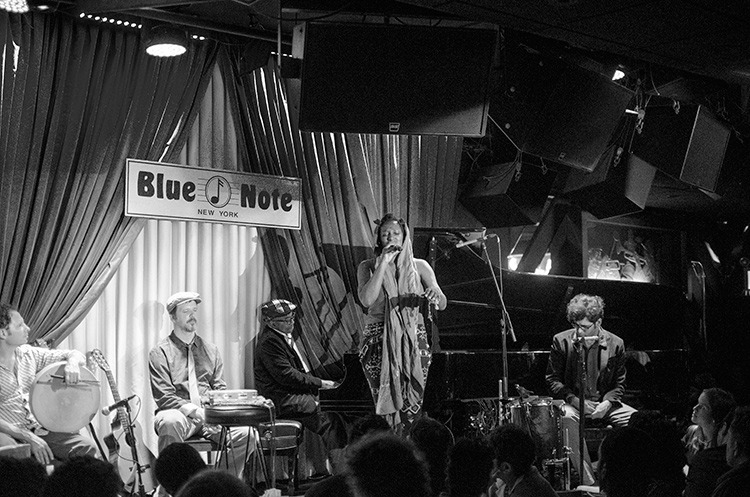
 Share On Facebook
Share On Facebook Tweet It
Tweet It

![[Video] BBC Documentary on Allen Toussaint](https://musiqology.com/blog/wp-content/uploads/2015/11/allen-toussaint-225x225.jpg)
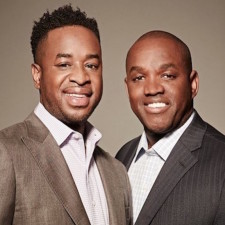
![[VIDEO] Black Music and the Aesthetics of Protest](https://musiqology.com/blog/wp-content/uploads/2015/03/onlynchings1-225x225.jpg)
